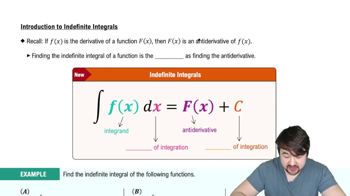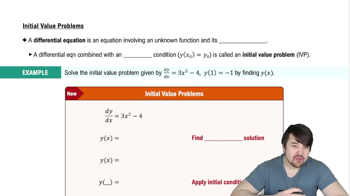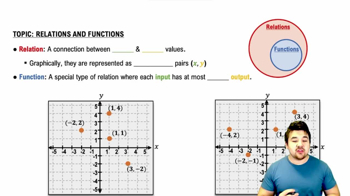Finding Functions from Derivatives
In Exercises 31–36, find all possible functions with the given derivative.
c. y' = sin (2t) + cos (t/2)
 Verified step by step guidance
Verified step by step guidance Verified video answer for a similar problem:
Verified video answer for a similar problem:



 5:53m
5:53mMaster Finding Differentials with a bite sized video explanation from Patrick
Start learning